Sustainability Education Case Studies: Developing a Sustainable Design Culture in Chinese Higher Education
Yan Yan JSE December 2019 General Issue PDF
Link to the JSE Fall 2019 General Issue TOC
Abstract
Sustainable development and creative thinking have become central aspects of Higher Education in today’s multidisciplinary world. With the balance between learning and teaching priorities in mind, the Design Academy, Sichuan Fine Arts Institute and School of Design, Jiangnan University incorporated the author’s newly evolved teaching methodology — 3Ac: ‘Acknowledgment, Action and Accountability’ model of sustainable development and creativity — into its taught programs at all levels. The 3Ac model is a formative learning method for building the capabilities of individuals to create changes toward sustainable development. This paper first defines the 3Ac design methodology (Acknowledgment, Action, and Accountability) in the context of sustainable development and education: Acknowledgment is the appreciation and recognition of the importance of sustainable development in the face of global challenges, with a particular focus on team effort, co-design and sharing findings and practices. Action is the establishment of design strategy and action plans that consider not only the importance of intentions, goals, affordable and reachable resources but also a clear road map for achieving maximum efficiency when tackling the most challenging tasks. Accountability deals with a growing understanding of the benefits of working together to tackle global challenges such as Corporate Social Responsibility (CSR) practices. The framework aims to develop students’ capabilities through case studies of undergraduate, graduate and continuing professional development of young designers. Based on evidence from the feedback and evaluation of action research, the research team plans to further refine the 3Ac design teaching methodology and create a model that can be implemented and scaled effectively with collaborative partners from the community, business and local government.
Keywords: sustainability education, Sustainable Development Goals, creative education, design methodology, creative thinking, higher education, China
- Introduction
Sustainable Development – the Role of Universities
“Sustainable development is an emerging wave in creative education. Let’s bond the people and the world for the new sustainable generation.” — Dr. Y. Y. Lam in ‘Green is the New Cool: Designing for a Low Carbon Life in a Creative, Actionable and Affordable Way’ report 2012.
Since the Industrial Revolution almost two hundred years ago, designers have dissociated creativity and sustainable development, preferring to create marketable products at the expense of our planet’s resources. However, in recent years, a renewed understanding of the earth’s finite nature has re-established sustainability’s primacy in the global discourse. As such, with the realization that a sustainable future can only occur by deliberate design, the decision to become sustainable is not an option but an imperative goal in this global world.
The path towards a sustainable future is immensely dependent on design education – the amount of support countries provides in terms of immersion programmes in sustainable development will shape the effectiveness of responsive training for students who are going to engage in creative industries.
In 2009, a researcher at Hong Kong Design Institute (HKDI), also the designated Head of the Department of Foundation Studies, identified the need to ascertain the role of higher education in the promotion and education of sustainable development. Accordingly, HKDI hosted the Reform of Design Education foundation forum, to explore how higher diploma programmes can incorporate sustainable development in their teaching approach. (Y.Y. Lam et al., 2010).
In a parelleled fashion , since 2017, the Design Academy of Sichuan Fine Arts Institute set out to incorporate sustainable development in its design major programme for both undergraduate degrees and master’s degrees. Their goals are – to provide missions to design learners on a sustainable development pathway; to meet and enhance the needs of the present, and to foster the greatest opportunities for creating a sustainable life for the future generations. With this in mind, we asked questions such as: where should we start? What needs to be reinvented? And what are the appropriate learning and teaching approaches?
In this paper, we established an interactive learning environment that leads to better understanding and appreciation of sustainable development contexts, especially the connectedness and impact of the 17 Sustainable Development Goals (SDGs), which aims to end poverty, promote prosperity and people’s well-being by 2030. To greater empower students’ engagement, we guided them to become more involved with the community in a deep-hearted fashion, as well as facilitating activities for open discussions and exchange of ideas. The Sustainable Development Goals, while lofty, have the potential to transform the status of human development. As such, their achievement is of paramount importance (The 2015 Human Development Report, A Future the Planet Can Accommodate, Syke Policy Brief, 2018)
To reach these ambitious goals, a new design methodology, namely, the 3Ac: Acknowledgment, Action, and Accountability was put in place in 2018, bringing the process of sustainable development in line with local objectives and projects. This 3Ac teaching methodology aims to enhance and extend students’ thinking capabilities, in terms of their ability to identify and promote inclusive sustainable solutions on a sustainable development pathway: to acknowledge risk and resilience, to take action to advance prosperity and well-being, and to address accountability and social responsibility.
The 3Ac teaching methodology, with enhanced transparency in its teaching and learning approach, is widely supported by other institutions. It reinvents higher education in sustainable development and establishes a sustainable learning culture for students aged 17 to 23 y/o in Hong Kong and Mainland China — the ultimate goal is to enable all members of all societies to access the benefits of sustainable development in a globalizing world (UNESCO Bangkok, 2008).
- What are the Sustainable Development Goals?
In 2012, the Sustainable Development Goals (SDGs), also known as the Global Goals, were established at the United Nations Conference on Sustainable Development in Rio de Janeiro. They were built on the success of the Millennium Development Goals (MDGs), which started a global effort in 2000 to tackle the indignity of poverty. The SDGs are a universal call to action to end poverty by 2030, to protect the planet and to ensure that all peoples enjoy peace and prosperity according to a new sustainable development agenda. The objective is to produce a set of universal goals that meet the urgent environmental, political and economic challenges facing our world. Yet, the questions of how designers with the capacity and aptitude for sustainable development can be nurtured, and identifying the challenges that these designers may face, require immediate responses from design education disciplines.
Due to the multifaceted nature of sustainable development in education — it concerns the long-term prospects of the wider economy, ecology, and equity of communities — there is an urgent need for scholars with inter-, and multidisciplinary problem-solving capabilities and experience (Glasser, 2004; Y. Y. Lam et al., 2012 ). As such, the complexity of these issues has a major bearing on curricula and the processes of learning in tertiary and higher education, and this process cannot be attached to the traditional and often over-specialized, scientific or technical methods. (UNESCO, 2002). Hence, the achievement of these goals requires concerted efforts, not simply from students, but also teachers, administrators, educational planners, as well as educators in other sectors (UNSD, Agenda 21, 1992; Jay, 2004).
The SDGs, encompassing a broad range of issues, are bold commitments to tackle some of the most pressing challenges facing the world today (UNESCO Bangkok, 2008). All 17 Goals are interconnected, as success in one area snowballs into success in other areas: tackling threat of climate change impacts the management of fragile natural resources; achieving gender equality or better health care alleviates or even contributes to the eradication of poverty while fostering peace and inclusive societies could reduce inequalities and help economies prosper.
These 17 Goals (G) in brief include:
G1: No Poverty – eradicate property in all its forms remains one of the greatest challenges facing humanity.
G2: Zero/ End hunger – achieve food security, improve nutrition and promote sustainable agriculture.
G3: Good Health and Well Being – ensure healthy lives and promote well-being for all at all ages.
G4: Quality Education – ensure inclusive and equitable quality education and promote lifelong learning opportunities for all.
G5: Gender Equality – achieve gender equality and empower all women and girls.
G6: Clean Water and Sanitation – ensure availability and sustainable management of water and sanitation.
G7: Affordable and Clean Energy – ensure access to affordable, reliable, sustainable and modern energy for all.
G8: Decent Work and Economic Growth – promote sustained, inclusive and sustainable economic growth, full and productive employment and decent work for all.
G9: Industry, Innovation and Infrastructure – build resilient infrastructure, promote inclusive and sustainable industrialization and foster innovation.
G10: Reduce Inequalities – reduce inequality within and among countries.
G11: Sustainable Cities and Communities – make cities and human settlements inclusive, safe, resilient and sustainable.
G12: Responsible Consumption and Production – ensue sustainable consumption and production patterns.
G13: Climate Action – take urgent action to combat climate change and its impacts.
G14: Life Below Water – conserve and sustainably use the oceans, seas and marine resources for sustainable development.
G15: Life on Land – protect, restore and promote sustainable use of terrestrial ecosystems, sustainably manage forests, combat desertification, and halt and reverse land degradation and halt biodiversity loss.
G16: Peace, Justice and Strong Institutions – promote peaceful and inclusive societies for sustainable development, provide access to justice for all and build effective, accountable and inclusive institutions at all levels.
(https://www.undp.org/content/undp/en/home/sustainable-development-goals.html)
Key questions set out for project planning associated with connectedness and impacts of sustainable development goals are as follows:
- Am I concerned about sustainable development and environmental issues? Reflections on the actions that I have been taking to reduce my own negative impact on the environment.
- In our society, what discourages environmentally-friendly consumption and behaviors? (Y.Y.Lam et.al, 2012, Green is the New Cool report)
- Should we be content in letting business alone account for sustainable development’? ‘Every one of our [sustainable development] innovations ended up either inhibiting achievement or creating new markets and new revenue. We found, in other words, that we don’t have to choose between the environment and profit. We can do both.’ (Xerox’s 2009 Report on Global Citizenship).
- How valid is the idea that ‘green only refers to mainstream consumer goods’, and not high-end food, fashion, and furnishings? It is probable that this kind of green consumerism moves us along but not very far forward in the path of sustainable development (P. Dauvergne et.al, 2013, p158)
- What are the experiences/experiments that you can provide to potential clients?
- What drives your decision when choosing one or two SDGs as the major paradigms of your projects?
- How would your projects’ outcomes influence the local communities?
- What are the ways to showcase that your sustainable development strategy is successful?
Responses to the above questions made available through sustainable development project reporting allow internal and external stakeholders to form opinions and to make informed decisions about higher education students’ contributions to the SDGs. At the same time, their contribution to the achievement of SDGs would foster their personal development — as a designer, a citizen or even as a parent (The 2015 Human Development Report).
- The 3Ac Teaching Methodology on Design with Acknowledgment, Action & Accountability for ‘Sustainable Development Goals’ Projects
[Figure 1] The 3Ac Design Methodology
A new design methodology, the 3Ac: Acknowledgment, Action, and Accountability, was put in place since 2018, with the aim of setting the context and reinventing higher education with regards not only to sustainable development education but also as a means of design thinking.
Sustainable Development Goals are at the heart of the 3Ac design methodology, evidenced by the commitment to transform sustainable development learning culture and to improve the living conditions for all peoples, with their local objectives and contexts in mind. Moreover, the 3Ac design methodology also intends to enhance and extend students’ abilities to identify and promote inclusive sustainable solutions throughout their creative processes. Concurrently, the 3Ac design methodology strives to foster an acknowledgment of risk and resilience, and encourage students to take action in advancing prosperity and well-being, while addressing issues of accountability and social responsibility.
Acknowledgment, Action, and Accountability are the central paradigms of the 3Ac design methodology. These interconnected paradigms are designed to help trainers and trainees prepare projects under the scope of sustainable development and provide tools to measure their wider impact.
Acknowledgment: defined as the expression or display of an appreciation for an individual, team or leader. A Globoforce research study in 2013 indicated that 89% of people are more motivated when they are told that they are doing something right, rather than being told that they are doing wrong, and nearly 80% of people look for this recognition during a desirable activity. In this light, acknowledgment of others’ feelings may have a crucial role in the resolution of conflicts, and as such, has the potential to contribute greatly to the enrichment of human lives.
Action: taking action is to formulate action plans, agendas and road maps to monitor timelines and progress on every task. This research observed that students rarely prepare action plans, agendas or road maps during their projects. In the absence of specific timeframes and deadlines, work may overspill from the time allotted, and in the worst-case scenario, may never be completed. Educating with a focus on time management will enhance students’ competence in the distribution of duties, coordination and undergoing targeted actions.
Accountability: this research argues that students can make a lot of progress on the sustainable development pathway simply by creating designs that encourage reflections on sustainability and accountability. Under this research’s frame, accountability is not punitive, but rather, as Bob Proctor remarks, it is ‘the glue that ties commitment to the result’. As such, it is about being accountable to high levels of performance, as opposed to being chained to feelings of fear and stress. Hence, accountability will enable the establishment of actionable goals for long-term development and further investments in sustainable development. Moreover, accountability creates a sustainable mentality, which in itself is an effective method to shift our mode of thinking. To put it succinctly, we should be held accountable to considerations regarding the impact of trends in the changing world of design education development (Y. Y. Lam, in DESIS Conference 2016).
The 3Ac methodology identifies three core elements: definition, contexts, and value. This corresponds to the belief that sustainable development learning and the project development process should be educationally sound, up-to-date, relevant, and culturally appropriate for application within design higher education settings in China and Hong Kong.
[Table 1] The Core Elements of the 3Ac Design Methodology : Definition, Contexts, and Value & Meaning
Selected Student Projects demonstrate the implementation of 3Ac design methodology approach
Case 1: Sustainable Design Workshop, Design Academy, Sichuan Fine Arts Institute. The workshop aims to draw creative persons in, bring them together, and strengthen their capabilities to create positive and meaningful sustainable solutions to ensure future environmental stability. In this project proposal, students started with a web search to collect ample data followed by an acknowledgment in terms of appreciating the beauty of nature. The designer brief fosters their planning of a project with a concern of strategy, timeframe, and affordability which was the first attempt to them. The meaning and value of accountability have urged them to rethink the role of a designer on how to protect our motherland. (SDG12).
[Figure 2] Design Team: Vweil and Rainie (Master’s degree in Product Design)
Case 2: Information and Interactive Design Studio course, Design Academy, Sichuan Fine Arts Institute. The studio course focuses on interdisciplinary, cross-disciplinary cognition and learning with an emphasis on the guidance and exploration of user experience, content analysis, and sustainable design. The project attempts to develop students’ design thinking capability and comprehensive literacy in finding, defining and solving problems, as well as expressing ideas; it also tends to promote peace and inclusivity for future generations in China (SDG16).
[Figure 3] Design team: Leouyin, Xintong Tan, Xuemei Yu and Yuefeng Li (Undergraduate Year 3)
Case 3: Social Service Design and Social Innovation Design course, Design Academy, Sichuan Fine Arts Institute. The course engages students to experience caring for each other, to better understand the core values of good health, happiness, and resilient living style in the modern world. In this project proposal, the team promoted the harmonious relationship between deaf and ‘ordinary’ people through a cooperative digital game. These actions are taken to ensure healthy lives, to promote well-being, as well as addressing accountability and social responsibility (SDG3).
[Figure 4] Design team: Zhong Peiteng, Gao Qianqian and Lin Ziyan (Undergraduate Year four)
- Research Method
This paper presents the teaching approach and learning process through the method of teaching cases. The cases involve a group of students at various levels of study in higher education, tasked with designing a product, or service, for a group of people in a real or simulated situation. Crucially, the students are also instilled with a commitment to design for sustainable development and social innovation. Action research is the central method used in this research. Data were mostly drawn from feedback, face-to-face interviews, project review meetings and focus group discussions of direct stakeholders (learners, trainers, users, and policymakers). To a lesser extent, data were also drawn from websites, conferences, and presentations. Combined, this method elicited rich, detailed and firsthand material (Stewart et al.,1990; Lofland et al.,1995; Frechtling et al.,1997). Moreover, these methods are the centralization of human interaction for knowledge production (Kvale,1996). Data analysis was grounded in theory with reference to current literature on sustainable development, sustainable development, and government policy.
The project outcomes suggested that a new way to learn and create should be further developed to enhance and empower educators and designers, to maximize their abilities in creating designs that help realize and promote sustainable cultures and societies. With this in mind, the new ‘3Ac’ design methodology, evolved from the design thinking pedagogy 3EMs (the core paradigms of ‘Empathize’, ‘Embrace’ and ‘Empower’), in itself conceived by one of the authors as means to enhance learning and teaching in creating thinking in 2014, has matured under the combined efforts of the authors and participants (undergraduates, graduates, and young design professionals from China). Both the ‘3EMs’ and ‘3Ac’ pedagogical approaches place the users at the center of the design process, as they play the role of co-creators from start to finish. However, ‘3Ac’ is unique in its exploration of the intrinsic value that lies within the engagement between stakeholders and communities, NGOs and the private sector. Moreover, ‘3Ac’ establishes networks that connect policymakers, educators, learners, and the wider public; combined, these stakeholders can contribute to a wider acknowledgment of the value of sustainable development design, and to place accountability at the forefront of their strategy. These networks also encourage the formation of collaborative SDGs projects and activities, as well as the implementation of ‘3Ac’ across disciplines. A point worth noting, however, is the respect that all parties must hold for the mission of SDGs (Y. Y. Lam et al., 2015).
- Summary of Major Findings and Reflection by Teachers
This research, with its application of the ‘3Ac’ design methodology, has demonstrated certain implications with regards to sustainable development. Firstly, it underscores the need to better understand the importance of the 17 Sustainable Development Goals — not simply its content, but also its context, especially with regards to case studies from different countries. Secondly, it shows how design for sustainable development is an international trend. This trend is reinforced by millennials’ lifestyle trends, as most younger participants’ purchasing and spending patterns contribute to aspects of sustainable development. (The Positive Impact of Millennials’ Lifestyle Trends, 2018)
Major challenges were also identified from the project. For instance, we observed that the perceived urgency for adopting a more sustainable lifestyle was low even among learners with higher educational levels. Our analysis also evidenced that an understanding of the diverse needs and interests of various stakeholders could assist us in devising according and effective communication strategies.
However, there are causes for optimism. Participants were inspired by new ways of learning and creating. For example, they were excited to create designs with the lowest possible environmental impacts, by minimizing resource consumption throughout the life cycle of products, structures, services, and systems. As such, designers should create designs that acknowledge, appreciate and propel sustainable learning culture, societies, and industries. What this also tells us, is that by nature design education is exciting and joyous. Hence, a visionary approach to sustainable development education would use these core elements to build the capabilities of young designers and to tackle pressing issues around sustainable development. The ‘3Ac’ design methodology, in particular, strengthens students’ commitment and enthusiasm for creating; they were eager to learn new concepts, connect with new people and create new designs to stimulate a wider interest in sustainable living. Clearly, the ‘3Ac’ design methodology also transformed the culture of co-creating, as students displayed a genuine interest in taking up greater social and cultural responsibility with regards to their communities, societies, and commitment to designing for users.
Finally, this research has demonstrated the need to engage and collaborate with emerging technologies, and to unlock new business markets and individuals. In doing so, broad networks and partnerships across a range of sectors were established, building legitimacy and projecting an image of accountability for this new design methodology.
- Conclusion
‘It’s very important for design quality and sustainable development to be in balance, we can make a lot of progress just by having a design that makes people think about sustainable development.’ (Y. Y. et al., 2012). The research team came up with 3Ac design methodology (Acknowledgment, Action, and Accountability) as a tool to instill sustainable development sensitivity in higher design education for ages 17-23 in China and Hong Kong. The goal is to help students to find their own ways of creative thinking by developing their own mindset of “designing for sustainable development”. It also seeks to go beyond capability and knowledge building (of acknowledgment and accountability), by strengthening their project management skills to ensure effective time management and quality standards of their project outcomes. As such, this study provided an effective stepping-stone for continuous reflection and improvements to achieve our goals. Moreover, it is evident from this study that students as designers in collaboration with the target clients would form a knowledge community to foster the right design for the right situation. This process broadens all stakeholders’ views about design by forging new grounds with sustainable development at the very core of its values — empathy with the clients’ viewpoints, situations, interests, behaviors, and lifestyle.
- Bibliography
A Future The Planet Can Accommodate – Syke Policy Brief 2018, Finnish Environment Institute: Finland.
Frechtling, J. Sharp, L. And Westat, (1997), User-Friendly Handbook for Mixed Method Evaluations v.2004, no. 6-24 http://www.ehr.nsf.gov/EHR/REC/pubs/NSF97-153/pdf/mm_eval.pdf
Glasser, H., (2004), Learning our way to a sustainable and desirable world: ideas inspired by Arne Naess and Deep Ecology, in Corcoran, P.B. and Wals, A. E.J. (2004), Higher Education and the Challenge of Sustainable development, Problematics, Promise, and Practice, (chapter 11), Dordrecht, Boston, London: Kluwer Academic Publishers
Jay, N.J., (2004), Integrating Education for the Environment and Sustainable development into Higher Education at Middlebury College, in Corcoran, P.B. and Wals, A. E.J. (2004), Higher Education and the Challenge of Sustainable development, Problematics, Promise, and Practice, (pp 263), Dordrecht, Boston, London: Kluwer Academic Publishers
Kvale S., (1996) Interviews: An Introduction to Qualitative Research Interviewing. Thousand Oaks, Calif: Sage Publications Inc.
Lam Y. Y. & Fung A., (2010), Building sustainable development into design education curriculum , Sustainable development in Design: Now! Challenges and Opportunities for Design Research, Education and Practice in the XXI Century, LeNS Conference, Bangalore, India, Vol.II pp. 845-856.
Lam Y. Y., (2012), TO LAST, in HKDI Signed Magazine, Launch Issue 2012 ,p42-49 publisher: Hong Kong Design Institute : HK
Lam Y. Y. And Lau W. C., (2012) ‘Green is the New Cool: Designing for a Low Carbon Life in a Creative, Actionable and Affordable Way’ report, Hong Kong Design Institute Publication: Hong Kong.
Y. Y. and Suen B., (2015), Experiencing empathy in design education through community engagement, In: International Journal of Continuing Education and Lifelong Learning Volume 7, Issue 2 (2015) p 53-69
Lofland, J. and Lofland, L.H., (1995), Analyzing Social Settings: A Guide to Qualitative Observation and Analysis, 3rd Ed. Belmont, CA: Wadsworth Publishing Company
Peter Dauvergne and Jane Lister, (2013), Eco-Business – a big brand takeover of sustainable development, The MIT Press: London, England
SHRM/Globoforce Spring 2013 Survey Report https://resources.globoforce.com/globoforce-blog/shrm-globoforce-spring-2013-survey-report-is-now-available
Reinventing Higher Education: Toward Participatory and Sustainable Development. Bangkok: Edited by Caroline Haddad ,(2008) , UNESCO Bangkok, 2008. Published by UNESCO Bangkok Asia and Pacific Regional Bureau for Education: Thailand
Stewart, A. And Corbin, J., (1990), Basics of Qualitative Research, Newbury Park: Sage Publications Inc.
The Positive Impact of Millennials’ Lifestyle Trends (2018). RamblingSoul.com http://ramblingsoul.com/the-positive-impact-of-millennials-lifestyle-trends/
The 2015 Human Development Report (2015), Publisher: the United Nations Development Programme (UNDP)
UNESCO (2002), A multimedia teacher education programme: Teaching and Learning for a Sustainable Future, version 2.0 Prepared by UNESCO by Griffith University, Australia http://www.unesco.org/education/tlsf/TLSF/pdf/artwork_pdf/brochure.pdf
United Nations Sustainable Development (UNSD),(1992), United Nations Conference on Environment & Development, Rio de Janerio, Brazil, Agenda 21 http://www.un.org/esa/sustdev/agenda21.htm
Ursula M. Burns and Anne M. Mulcahy, (2009) “Dear Stakeholders” letters, in Xerox’s 2009 Report on Global Citizenship







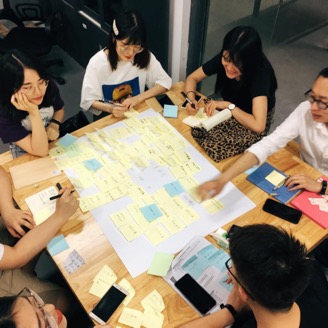


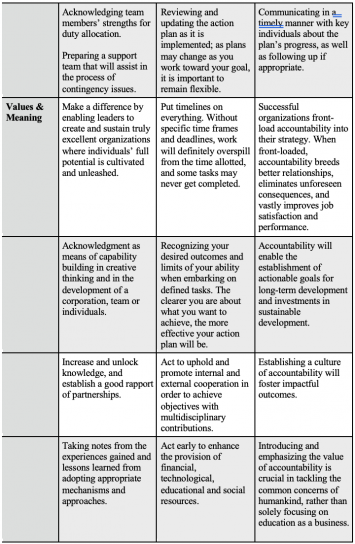

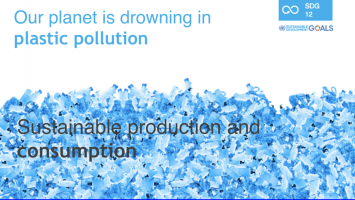

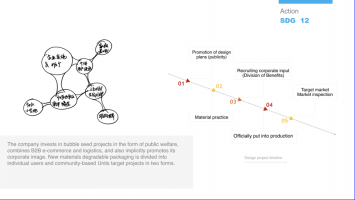




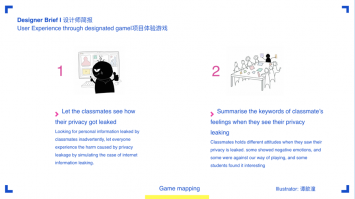
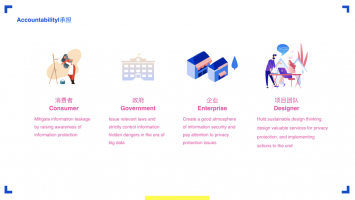


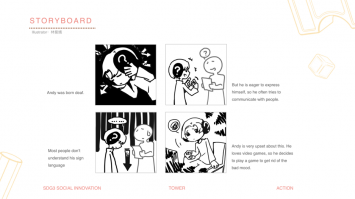
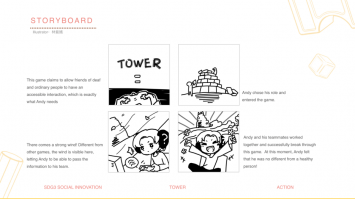



 Dr Lam Yan Yan is the Distinguished Professor at SCFAI and the Distinguished Associate Professor at the Department of Design Faculty of Design and Environment, the Technological and Higher Education Institute of Hong Kong. She currently serves as a subject specialist at the Design of the Hong Kong Council for Accreditation of Academic & Vocational Qualifications, and as part of the Executive Committee of the Visual Arts of the Curriculum Development Council, Hong Kong Examinations and Assessment Authority, Education Bureau, HK.
Dr Lam Yan Yan is the Distinguished Professor at SCFAI and the Distinguished Associate Professor at the Department of Design Faculty of Design and Environment, the Technological and Higher Education Institute of Hong Kong. She currently serves as a subject specialist at the Design of the Hong Kong Council for Accreditation of Academic & Vocational Qualifications, and as part of the Executive Committee of the Visual Arts of the Curriculum Development Council, Hong Kong Examinations and Assessment Authority, Education Bureau, HK.  Professor Duan Sheng Feng is the Dean of the Design Academy of SCFAI, a member of the Education and Education Committee of the Ministry of Education, and a doctoral tutor. His areas of research are design intervention in education poverty alleviation, social innovation and urban-rural integration, establishing a learning community about education for children in rural areas and evolving new design strategies for poverty alleviation through education.
Professor Duan Sheng Feng is the Dean of the Design Academy of SCFAI, a member of the Education and Education Committee of the Ministry of Education, and a doctoral tutor. His areas of research are design intervention in education poverty alleviation, social innovation and urban-rural integration, establishing a learning community about education for children in rural areas and evolving new design strategies for poverty alleviation through education. 
